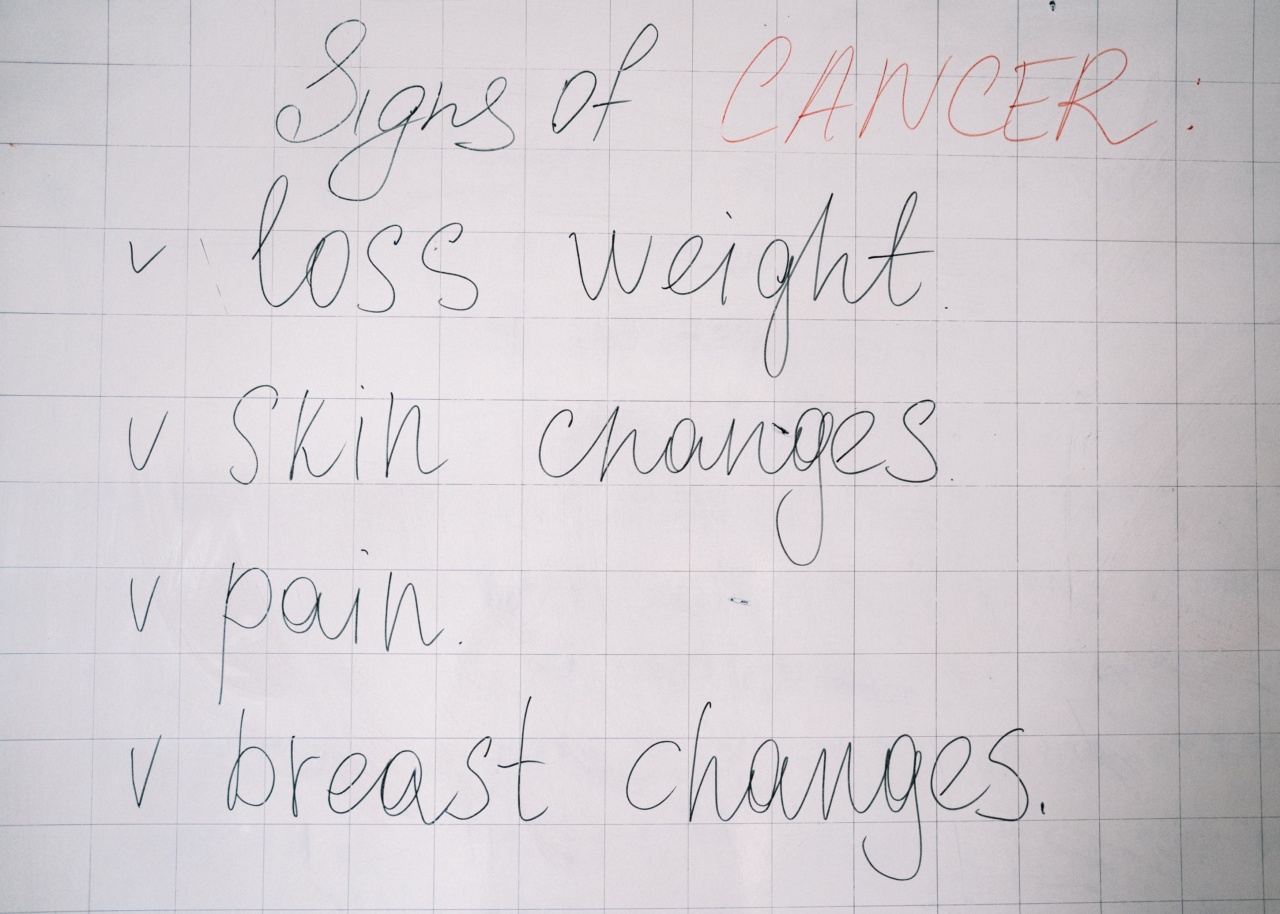Ovarian cancer is a type of cancer that occurs in the ovaries, which are the female reproductive organs responsible for producing eggs. It is the fifth most common cancer in women and is often difficult to detect in its early stages.
Understanding the signs and symptoms of ovarian cancer is crucial for early detection and improving treatment outcomes. In this article, we will explore the key signs and symptoms of ovarian cancer that every woman should be aware of.
1. Abdominal or Pelvic Pain
One of the most common symptoms of ovarian cancer is persistent abdominal or pelvic pain. This pain may feel like a pressure or heaviness in the lower abdomen.
If you experience any unexplained or ongoing pain in these areas, it is important to consult your healthcare provider for further evaluation.
2. Bloating and Difficulty Eating
Bloating is another common symptom that women with ovarian cancer may experience. This bloating is often persistent and does not go away with usual remedies.
Many women also report feeling full quickly or having difficulty eating, even when consuming small amounts of food. If you notice any unexplained changes in your appetite or difficulty eating, it is essential to seek medical advice.
3. Changes in Bowel Habits
Changes in bowel habits can also be a sign of ovarian cancer. These changes may include constipation, diarrhea, or a combination of both.
It is important to pay attention to any persistent changes in your bowel movements, especially if they last for more than a few weeks, as they could be an indication of an underlying health issue.
4. Frequency and Urgency of Urination
Increased frequency of urination or a constant feeling of urgency to urinate can indicate ovarian cancer.
If you find yourself needing to visit the bathroom more frequently or suddenly experiencing a strong urge to urinate, despite having a normal fluid intake, it is advisable to consult with your healthcare provider.
5. Fatigue and Low Energy Levels
Fatigue and low energy levels are often overlooked symptoms of ovarian cancer. Many women with this type of cancer may feel constantly tired, lacking energy, and experiencing a general sense of weakness.
While fatigue can be caused by various factors, if it persists and is accompanied by other symptoms, it is essential to consider seeking medical advice.
6. Unexplained Weight Loss or Gain
Unexplained weight loss or gain can be indicative of ovarian cancer. Significant changes in weight, without any apparent reason such as changes in diet or exercise, should be evaluated by a healthcare professional.
Sudden weight loss can occur due to the presence of a tumor, while weight gain can be caused by the accumulation of fluids in the abdominal area.
7. Changes in Menstrual Cycle
Irregularities in the menstrual cycle can sometimes signal the presence of ovarian cancer. This may include changes in the duration of the menstrual cycle, heavier or lighter periods, or the onset of menopause at an earlier age than usual.
It is important to discuss any significant changes in your menstrual cycle with your healthcare provider, as it can help identify any underlying health issues.
8. Abnormalities in the Abdomen
Physical abnormalities in the abdomen can also be signs of ovarian cancer. These abnormalities may present as a lump or swelling in the abdomen, which can be felt during a physical examination.
If you notice any unusual changes in the shape or size of your abdomen, it is crucial to seek medical attention for further evaluation.
9. Back Pain
While back pain is a common concern for many individuals, persistent or worsening back pain can sometimes indicate ovarian cancer. The back pain associated with ovarian cancer may feel deep and achy, typically occurring in the lower back.
If you are experiencing back pain that does not improve with rest, stretching, or over-the-counter pain relievers, it is important to consult with your healthcare provider.
10. Family History and Genetic Factors
Having a family history of ovarian cancer, as well as certain genetic factors, can increase a woman’s risk of developing this disease. Women with a mother, sister, or daughter who has had ovarian cancer are at higher risk.
Additionally, women with certain genetic mutations, such as BRCA1 and BRCA2, are more prone to developing ovarian cancer. If you have a family history of ovarian cancer or carry specific genetic mutations, it is important to discuss your risk and potential preventive measures with your healthcare provider.






























